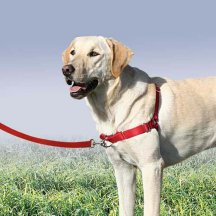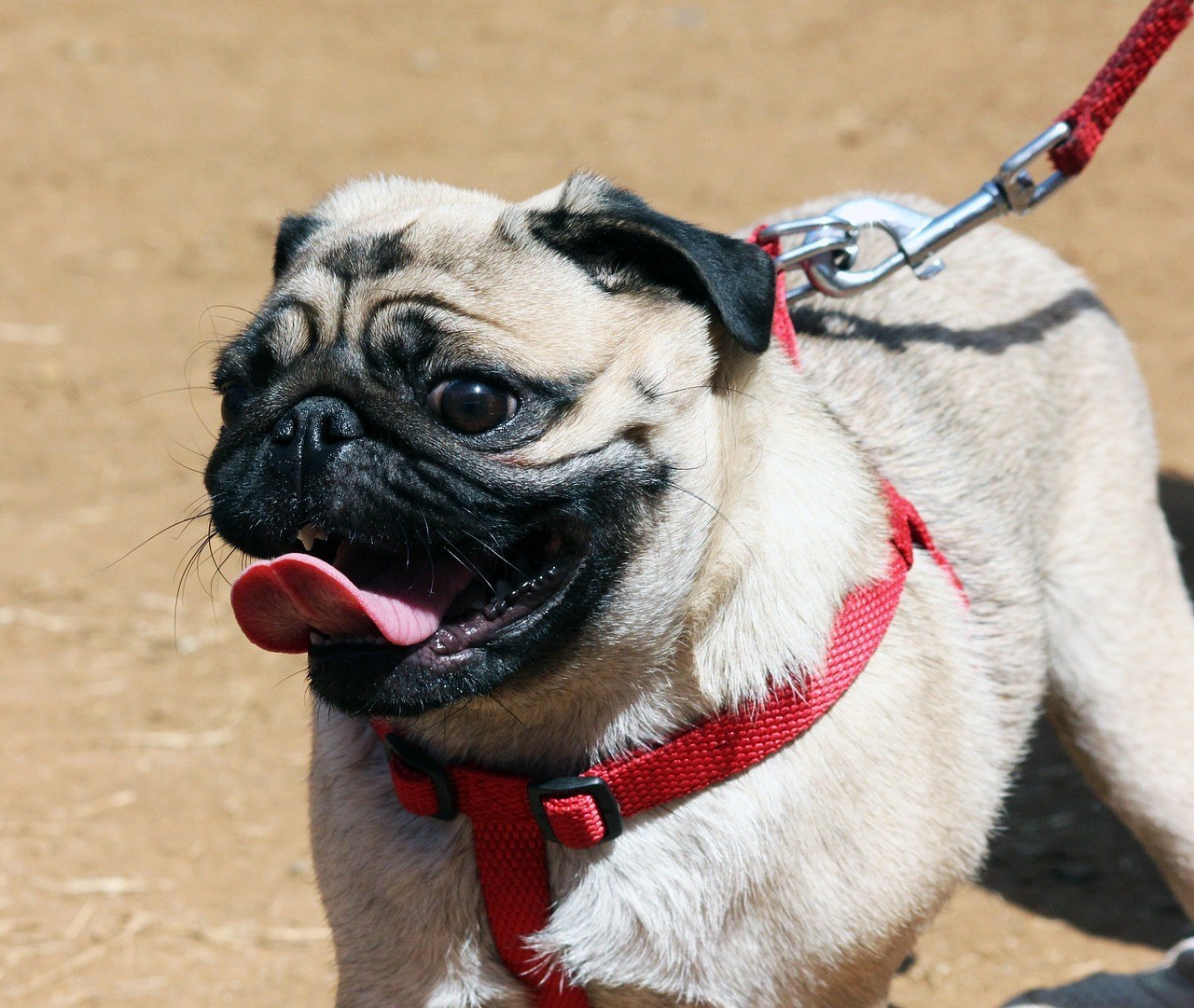8 Secrets To Eliminate Pulling On A Leash
Share

 Ah, summer. Green grass and warm weather. Time to get outside with your dog and enjoy a stroll in the park, a vacation together, maybe watching a sunset along a beach you rarely get a chance to observe.
Ah, summer. Green grass and warm weather. Time to get outside with your dog and enjoy a stroll in the park, a vacation together, maybe watching a sunset along a beach you rarely get a chance to observe.
Unless your dog tries to pull your arm out of its socket every time you clip the leash to his collar.
I understand. After training classes, hours walking on a leash, and countless shoulder aches, my dog was still a puller. I finally cracked the code and have a dog who walks calmly on a leash. Here are 8 secrets that made a difference for me and will help you.
1) Tug, don’t pull
Have you ever walked into a room and noticed a low sound, like the hum of a fan, then after a while forgotten it was there? Pulling back on the leash to restrain your dog works the same way. It might get your dog’s attention at first, but eventually your dog tunes it out. A quick tug-and-release on the leash will get your dog’s attention each time you do it.
2) Engage multiple senses
In addition to the tug, add a short, loud sound to get your dog’s attention. I use a loud “Ah!” when my dog does something she shouldn’t. When she heard that word while pulling and felt a tug on her collar, she knew she was doing something wrong. Use a word your dog already associates with “stop” or give a short toot on a whistle.
3) Show that pulling doesn’t get anywhere
When your dog pulls, turn around and walk the other way. Your dog will quickly get to the end of the leash length, which will get his attention. Since he can’t continue in that direction, your dog will turn around to follow you. If he starts to pull again, turn around and walk the other way again. This teaches your dog that, while he may pull to get somewhere faster, all it does is slow things down. Yes, it gets old quick – and that’s why it works.
4) Teach the joy of a loose leash
This goes hand in hand with step #3. When you turn around and your dog makes his way to catch up to you, be ready with a treat in hand. As soon as your dog is at your side, reward him with praise and a treat. At the same time, make sure there’s some loose leash. Do this every time he is at your side until it becomes habit. It shows your dog that good things happen when he walks calmly beside you.
5) Use 2 commands – not just “heel”
When your dog is at your side, say “heel, good dog!” and drop a treat. That will teach your dog that “heel” means being at your side and is a good thing. But the second command is just as important.
Choose a release word that tells your dog when the first command is over. I use “alright” to tell my dog when she can stop heeling, staying, or whatever command I last gave her. How does this help with walking on a leash? There may be times when you don’t care if your dog is at heel, like in an open area. If you tell your dog to heel then give the release command, your dog clearly understands what’s expected. He doesn’t get confused by the fact that running ahead is ok sometimes but not others. A series of “heel,” “alright,” and “heel” again did wonders to quickly teach my dog to be at my side when I said “heel.”

6) Use the right equipment.
Leashes: Make sure your leash is comfortable for you to hold. You’ll be holding and tugging it a bit as you train your dog, so use one that won’t hurt your hands and cause you to go home in frustration and pain.
Harnesses: If your dog is a puller, you’ve probably heard him choke himself. That can actually lead to trachea injuries. Many people opt for a harness to keep pressure off their dog’s throat. What they don’t know is that a traditional harness engages the pulling reflex. Do you know why sled dogs pull sleds? It’s because dogs have a reflex to pull against what is pulling them. A sled dog feels the sled pull backwards, so they pull forward. A traditional harness engages the same reflex in your dog, which actually encourages him to pull more. If you want to use a harness, use one that lets the leash clip in the front (like the one in this dog harness no-pull set). That way, when you tug on the leash from the front, it pulls forward so your dog reflexively moves back. Voila, he isn’t pulling and you can reward him for the behavior you want to encourage.
7) Keep training sessions short and consistent.
Training sessions are most effective when they’re 20 minutes or less, so don’t spend longer than that working on this each day. Be consistent about what you expect while your dog is on-leash. If you spend 20 minutes training your dog then let him run wild on the leash for another 20 minutes, you’ll end up with a very confused dog who has no idea how he should behave on a leash.
8) Be patient.
I won’t lie: it takes patience to retrain a puller. But the rewards are well worth it. In time, your dog will learn what behavior gets rewarded and what doesn’t. If you get frustrated turning around and walking the opposite direction over and over, remember this: each step is a step closer to a calm dog, even if it’s not closer to the end of the block.
Nobody enjoys having their dog pull them down the street. The good news is even the strongest, most determined puller will stop when he understands what’s expected. For me and my dog, these 8 secrets turned walks from a contest of strength into an enjoyable experience my dog and I both look forward to. Good luck, be patient, and enjoy!
This guest post comes from Sonia Charry of PawPosse.com, which specializes in Cool Stuff For Big Dogs and features the Big Dog Blog.










